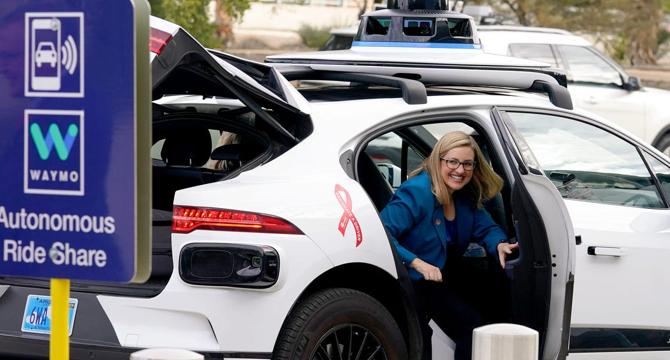Insider
1M
420

Image Credit: Insider
Uber and Lyft drivers say Waymo's robotaxis are hurting their earnings in Phoenix and LA
- Uber and Lyft drivers have claimed that the rollout of Waymo One robotaxis has made an already competitive market even more difficult. Last month, Alphabet's autonomous taxi service announced that it was providing more than 100,000 rides a week in the US. While it is unclear how much this is currently impacting drivers' earnings, it is likely that if autonomous taxi adoption continues to grow ride-hail drivers' earnings will drop. Additionally, some Waymo One rides are cheaper than Uber and Lyft, which is deterring passengers from using traditional ride-hailing services.
- While self-driving vehicles could impact drivers' earnings in the US, restrictions on robotaxis could help reduce competition. For example, Waymo One restricts its airport service for Phoenix and San Francisco to human drivers only. In addition, passengers may not yet be comfortable with driverless cars, with some claiming that Waymo One vehicles are a 'hazard on the road.'
- Several companies are competing for a share of the US robotaxi market. However, Waymo One, Alphabet's autonomous taxi service, announced in August that it was providing more than 100,000 paid rides weekly in Los Angeles, San Francisco, and Phoenix.
- Jason D told Business Insider it's become harder to make money in recent years due to increased competition with human drivers, lower fares, fewer tips from riders, and higher operating costs. Now, he said the rollout of Waymo One robotaxis has made this problem even worse.
- Some Uber and Lyft drivers have claimed that the driverless taxis operating in their markets are driving down their earnings, which is a concern. According to ride-hail experts, if growing adoption of self-driving vehicles continues to rise, it will hurt ride-hail drivers' earnings in the years to come.
- Regulatory hurdles and safety concerns could slow the growth of the robotaxi industry. Comparing the costs of Waymo One against Uber or Lyft is difficult because prices vary by market, length of trip, promotional offers the passenger may have, and whether the client tips a human driver.
- John, an Uber and Lyft driver based in Phoenix, said he thinks Waymo One's robotaxis have hurt his earnings. He sometimes asks his passengers about their experiences using driverless taxis to get a better understanding of his competition.Though restrictions could help limit the impact on ride-hailing drivers.
- To be sure, it's unclear how much robotaxis like Waymo One are currently impacting drivers' earnings. Carl Benedikt Frey, a professor of AI and work at the Oxford Internet Institute, previously told BI there's little evidence that robotaxis have had a significant impact on Uber and Lyft drivers' earnings so far.
- Nicole Moore, a part-time Lyft driver and the president of the driver advocacy group Rideshare Drivers United, previously told BI that trips to and from airports are many drivers' 'bread and butter.' She said that competition from robotaxis for these rides would be a concerning development for drivers.
- Waymo One plans to expand to Atlanta and Austin early next year and will be facilitated through the Uber app. Waymo and Uber did not respond to BI's request for comment.
Read Full Article
25 Likes
For uninterrupted reading, download the app